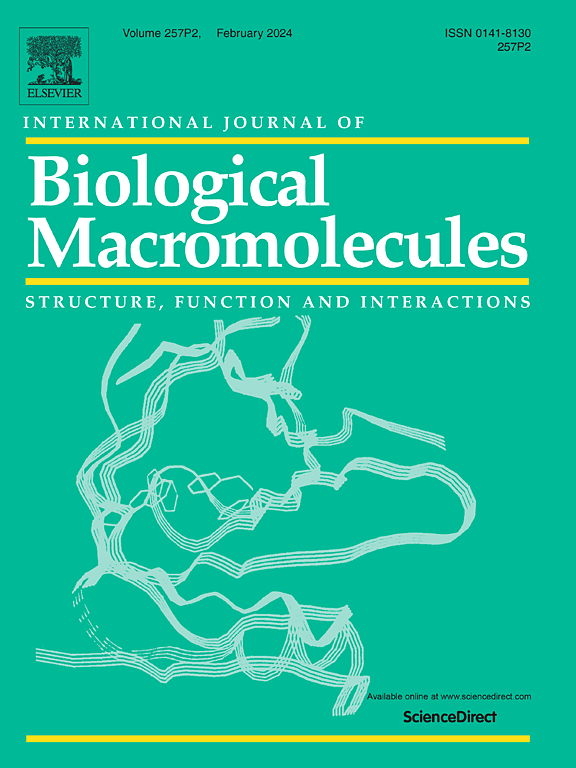Evaluation and comparison of the behavioral properties of raw, alkali-treated, and triethoxy silane–treated cellulosic fibers derived from Rottboellia cochinchinensis plant as a substantial material for polymer composites
IF 7.7
1区 化学
Q1 BIOCHEMISTRY & MOLECULAR BIOLOGY
International Journal of Biological Macromolecules
Pub Date : 2025-04-02
DOI:10.1016/j.ijbiomac.2025.142794
引用次数: 0
Abstract
This investigation involved isolating a unique cellulosic fiber from the Raoul grass plant (Rotboellia cochinchinensis) and compared the behavioral effects of raw fiber with various chemical treatments, specifically 5 % NaOH and a 70: 30 mixture of (3-aminopropyl) triethoxy silane, on Raoul grass fiber. The treatments were conducted for 45 min, after which the fiber properties were evaluated. The cellulose percentages of the alkalized and silane-treated fibers increased to 72.29 % and 75.07 %, respectively, whereas the raw fiber contained 65.23 %. The X-ray diffraction study revealed a significant increase in the crystallinity index of the alkalized and silane-treated fibers, with an increase of 41.8 % and 43.89 %, compared to the 33.6 % found in the raw fiber. Thermogravimetric analysis established that both the alkalized and silane-treated fibers exhibited a maximum degradation peak at 366.27 °C. The kinetic activation energies for the alkalized and silane-treated fibers were 60.63 and 64.52 kJ/mol, respectively. The energy-dispersive spectroscopy spectrum of the alkalized and silane-treated Raoul grass fiber showed no impurity elements, indicating the successful elimination of impurities from the fiber's surface. These findings conclude that silane treatment is the most suitable method, and Raoul grass is a promising material for reinforcement in fiber-reinforced plastics.
求助全文
约1分钟内获得全文
求助全文
来源期刊
CiteScore
13.70
自引率
9.80%
发文量
2728
审稿时长
64 days
期刊介绍:
The International Journal of Biological Macromolecules is a well-established international journal dedicated to research on the chemical and biological aspects of natural macromolecules. Focusing on proteins, macromolecular carbohydrates, glycoproteins, proteoglycans, lignins, biological poly-acids, and nucleic acids, the journal presents the latest findings in molecular structure, properties, biological activities, interactions, modifications, and functional properties. Papers must offer new and novel insights, encompassing related model systems, structural conformational studies, theoretical developments, and analytical techniques. Each paper is required to primarily focus on at least one named biological macromolecule, reflected in the title, abstract, and text.

 求助内容:
求助内容: 应助结果提醒方式:
应助结果提醒方式:


